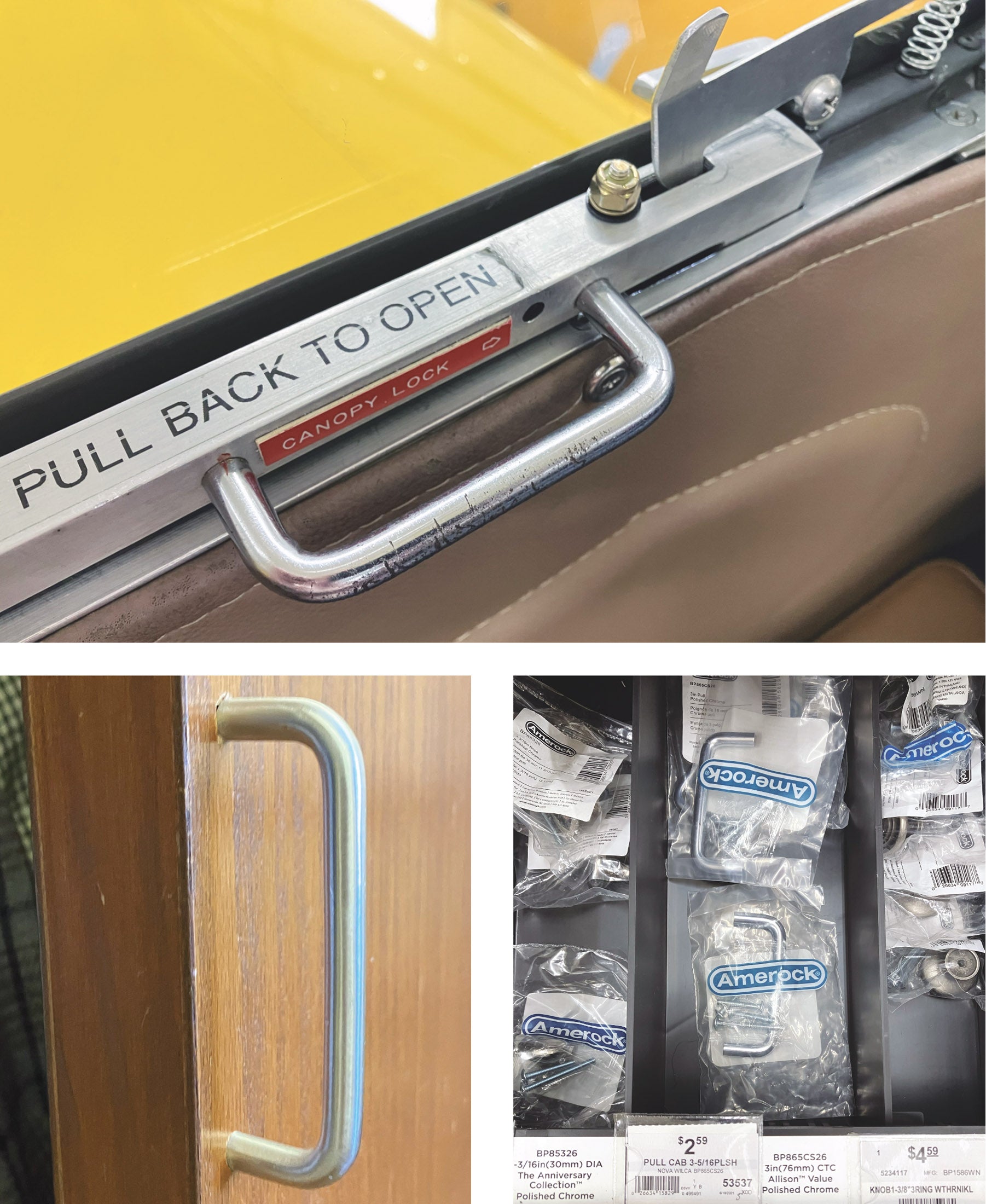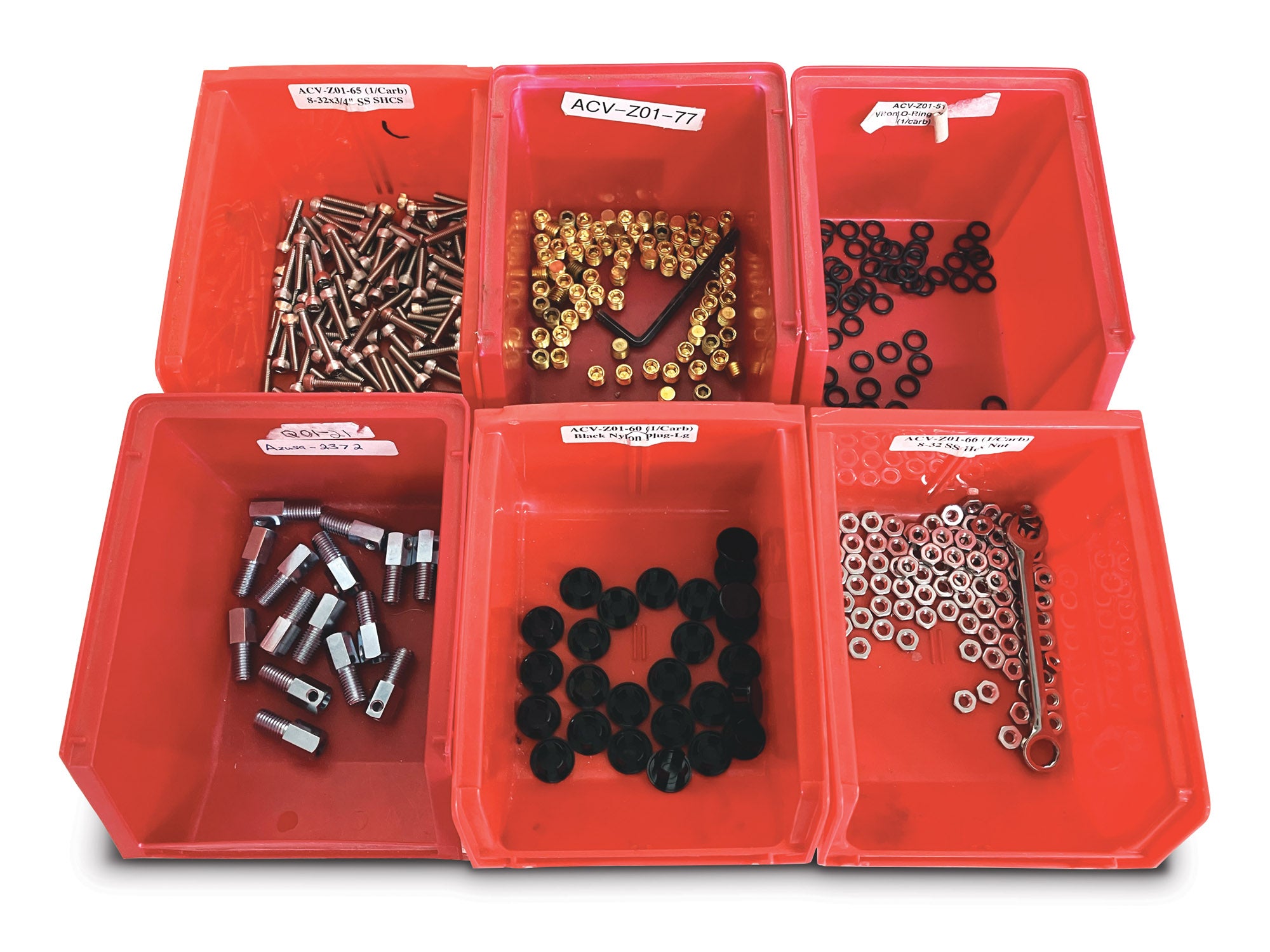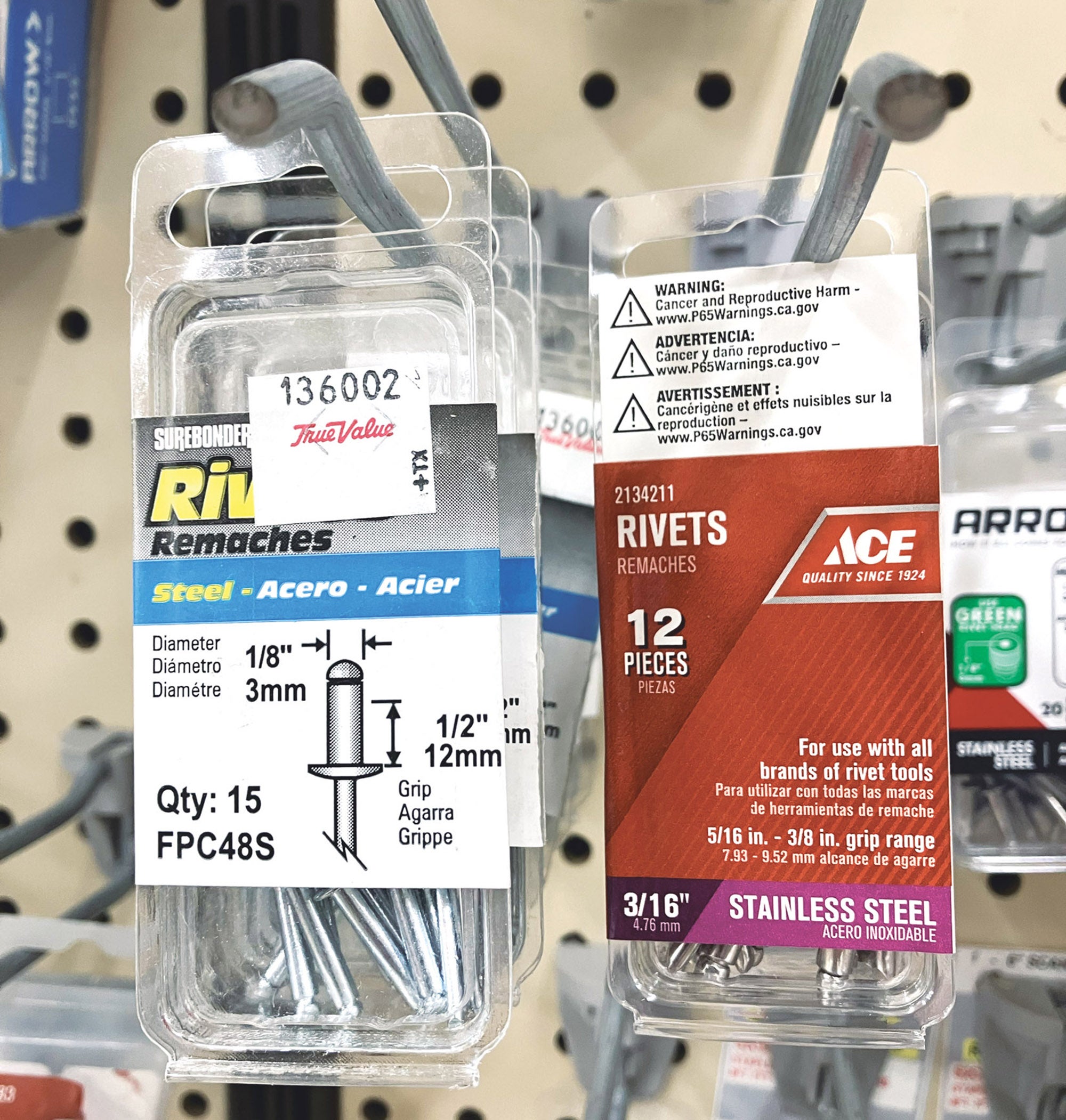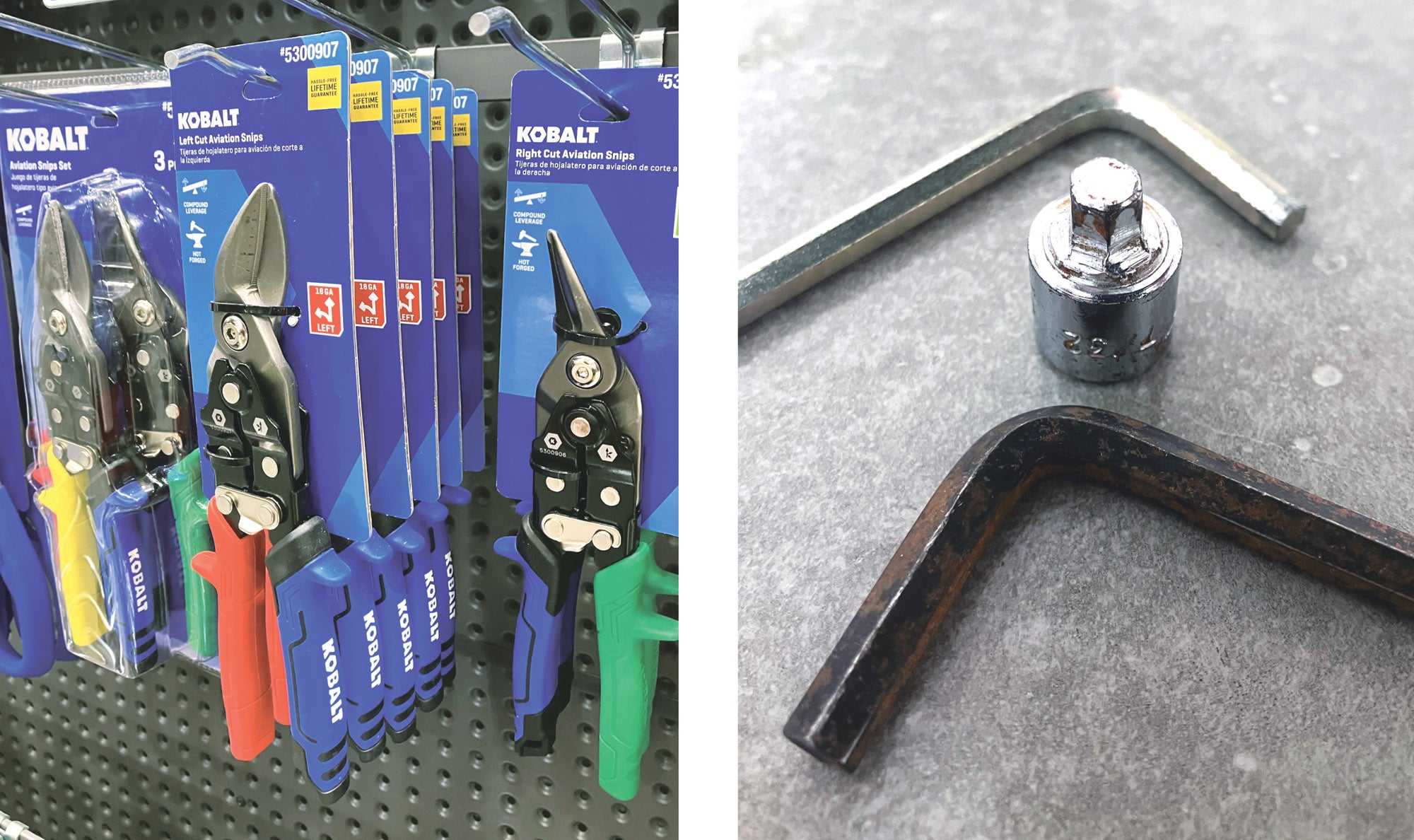For this issue I’m drawing from my Air Force service, separate careers in the industrial tool manufacturing and airplane kit industries, my own airplane building experience and a 12-ounce mug of Irish coffee. I’m writing fast to prevent most of the inspiration from coming via the Irish coffee. Read at your own pace.
Nuclear certified string (no, the Irish coffee hasn’t already taken hold) was an item in my Cold War-era B-52 weapons loading kit. Everything used to load nuclear weapons was (supposedly) nuclear certified. I can’t speak to the specifics of nuclear-certified string—I imagine it included the blunt application of cash and a knot of forms filled in and filed away in triplicate—but I can guess at the reason: No one wants a nuclear explosion triggered or hindered by string. I can also guess that the string in my ditty bag was structurally and chemically identical to the string sold off base, at Kmart. Homebuilts have such parts. Not nuclear certified parts, of course, but everyday parts that don’t know they’ve been drafted into the air corps.
During my Sonex career I had customers fret that a plastic snap bushing, cabinet handle (we’ll get to that later) or bronze bushing wasn’t in their kit or available from an aviation supply house. They’d ask, “What’s up, Kerry? No one has this part.”
I’d say, “Ace.”
Flattered, they’d wait for me to finish my thought. But that was my thought. I’d send them to their local hardware store.

What Is an Airplane Part?
The idea that an airplane has to be made from parts with an aviation pedigree or be sourced from aviation-specific suppliers is evidenced in the attitude of builders who speak of “real” airplane parts. In the Sonex community debates come up concerning (legacy) drum brakes and non-pneumatic tailwheels. Some don’t think they are real airplane parts. Any part on an airplane that performs its assigned task is a real airplane part. Sonex’s blind rivet construction (Zenith and Van’s RV-12 use them as well) was often questioned.
Some wanted aircraft rivets. They meant solid rivets. But the Sonex family of airframes was designed for blind rivets. The use of 6061-T6 aluminum was also questioned. One kit manufacturer, long out of business, displayed their airframe next to the Sonex booth at AirVenture with a banner that proclaimed their airplane used real aircraft aluminum. In their mind, that was 2024-T3. Truth is, tin cans can be used if a design is properly engineered to use tin cans. A part becomes a real airplane part when it safely serves its intended purpose. That brings me, finally—and only a few sips into my Irish coffee—to my point: There are two types of parts on airplanes. Everyday, mass-produced parts and design-specific parts. In this column I examine the first category.

Non-Airplane Airplane Parts

A hallmark of good engineering is the utilization of parts that already exist. Generally, those are mass-produced, non-industry-specific items that are widely available and generally inexpensive. Sintered bronze bushings fit that description. They don’t know or care how they’re used or from where they’re sourced and if they’re assigned to fly, so be it. A budget drawer pull can double as a canopy handle. A piece of fiberglass cloth and a tube of high-temp RTV are a fireproof nosewheel steering link boot in waiting. A single-pole switch that can turn on accessory driving lights can turn on a landing light.
The Wright brothers launched this whole build-your-own-airplane thing without aviation-grade…anything. I bet they used “bicycle” and “bicycle-grade” parts and materials. The brake cable on my Sonex is from a bicycle store, but it could have come from a local power center, as my elevator trim wire did. The trim lever’s friction washer is a plastic washer from a hardware store. The wing spar attach pins are trailer hitch pins from a farm implement store. If that all sounds a bit sketchy to you, you may have called me in the past wondering from which aviation supply house you should buy wheel bearing grease.
Many of the plumbing bits used in fuel, oil and water-cooling systems can be found at hardware and auto-supply stores—almost always for less than the aviation-specific suppliers. By way of comparison, for this column I price-shopped a 3/8-inch pipe to 1/2-inch tube 90° aluminum fitting. A popular aviation supplier had them for $17.75 while a supplier of performance car parts had them for $10.99. My local franchise of a national hardware store chain has high-ish prices but is also convenient when I need an odd bit to keep progress going.
My fuel shutoff valve came from that hardware store. Going to the store also lets me do some “aisle engineering,” in which I browse the parts and noodle elegant solutions to whatever mini project I may be involved in. However, when I have a lengthy list of needed items and time to wait I’ll place an order with any supplier that maximizes my parts budget and shipping dollar. Wearing the hat of a purchasing agent is one of the many aspects of homebuilding I enjoy.
What, Exactly, Is an Airplane Tool?
At the risk of sounding philosophical, airplane tools don’t exist. (No, the Irish coffee still hasn’t taken hold.) Tools for specific tasks exist, but not tools for airplanes. Extending that thought, there is a strong likelihood your local home improvement or hardware store has an inventory of what are called “aviation snips,” though you may be the only person in your town of 20,000 people building an airplane. Aviation snips, I’ll wager, are used more in the HVAC trade than in aviation. Finding you need to cut aluminum sheet stock and finding you don’t have the tool to do it need not trigger a multiday wait for snips to arrive from an aviation supply house. Similarly, I can purchase a pneumatic rivet puller for pulling the blind rivets used in many designs for $39.97 and a 6-mile round trip to a chain store. Or, should I be blinded by the word “airplane,” I could pay over $100 and wait a few days for a brown truck to deliver one from an aviation tool supplier.

I have in my possession a small tool that may have cost taxpayers hundreds of dollars. I’m confident it is nuclear certified as its purpose was to remove and install a quarter-sized cap from the side of a rubber-coated, nuclear-tipped AGM-69 Short Range Attack Missile (SRAM). It’s a souvenir from my weapons loading days. In Air Force speak it may be a Tool, Hex Drive, Male, 7/32-inch, AGM-69 Safing Plug, but functionally it could be replaced by a throwaway hex key from an assemble-it-yourself metal patio furniture set. Like the sintered bronze bushings mentioned earlier, tools don’t know their purpose. Ask any adjustable wrench that’s ever filled in for a hammer. They don’t know that they’ve been drafted into your air corps. It stands to reason, therefore, that it doesn’t matter where they come from, as long as they serve their purpose with honor.
During my Sonex career I saw builders stuck, delayed and tripped up by the word “airplane.” If it helps move your project forward, remember that parts are just parts and tools are just tools. Mass-produced items have many sources, often local. There are (at least) four sources in Oshkosh, Wisconsin, for Sonex canopy handles. Sonex isn’t one of them. However, if I were to ask for a Sonex canopy handle at one of those stores I’d get the same stare I’d deserve if I asked for nuclear certified string or an AGM-69 safing plug removal tool.
With that said, I’ll wipe the whipped cream mustache from my upper lip and drive to a bike shop to conscript a 3-foot length of braided cable to serve as a canopy restraint. Airplanes don’t build themselves and, right now, it’s building time.














Hey Kerry, great article- and I laughed out loud at the “blunt application of cash” comment, since that’s how certification seems to work.
I had a follow up question- I can’t get your website to load for me (domain issue, by appearances) and I wanted to ask about your canopy latch stop. I have a new-to-me Sonex that uses a different, cumbersome style of latch stop involving spring pins and 3 hands and your design is intriguing.
Between you and Paul Dye, I always learn something new and interesting. Thanks for continuing to write!
I’m a retired nuclear engineer that has built 4 homebuilts. I did a lot of shopping in the aviation section of Home Depot and Harbor Freight. We used to review commercial grade parts all the time for non-critical (no play on words intended) applications in nuke plants. The joystick grip on my joystick in the first home built came from an ATARI game. There is no reason why items not critical for safety of flight can’t be repurposed commercial grade items.